Beisler 2112-5 Operating Instructions Manual
- Category
- Sewing machines
- Type
- Operating Instructions Manual
This manual is also suitable for

Operating Instructions

All rights reserved.
Property of Dürkopp Adler AG and protected by copyright. Any reuse of these contents,
including extracts, is prohibited without the prior written approval of Dürkopp Adler AG.
Copyright © Dürkopp Adler AG 2020
IMPORTANT
READ CAREFULLY BEFORE USE
KEEP FOR FUTURE REFERENCE

Table of Contents
Operating Instructions 2112-5 - 00.0 - 02/2020 1
1 About these instructions ........................................................... 3
1.1 For whom are these instructions intended?.................................. 3
1.2 Representation conventions – symbols and characters ............... 3
1.3 Other documents .......................................................................... 5
1.4 Liability.......................................................................................... 5
2 Safety........................................................................................... 7
2.1 Basic safety instructions ............................................................... 7
2.2 Signal words and symbols used in warnings................................ 8
3 Machine description................................................................. 11
3.1 Components of the machine....................................................... 11
3.2 Proper use .................................................................................. 12
3.3 Declaration of Conformity ........................................................... 13
4 Operation................................................................................... 15
4.1 Switching on and off the machine............................................... 15
4.2 Operating the machine head ...................................................... 16
4.3 Function sequences ................................................................... 16
4.3.1 Sewing on the pocket facing....................................................... 17
4.3.2 Lapping the left fly piece to the left trouser component .............. 21
4.3.3 Sewing the right fly piece onto the right trouser component....... 24
4.3.4 Lapping the wing pocket to the left trouser component .............. 27
4.3.5 Lapping the right wing pocket to the right trouser component.... 29
4.4 Quick stitch width adjustment (stitch width adjustment) ............. 32
4.5 Controlling the machine cycle..................................................... 33
4.5.1 Controlling the machine cycle in Mode 00.................................. 34
4.5.2 Controlling the machine cycle in Mode 01.................................. 35
4.5.3 Controlling the machine cycle in Mode 02.................................. 36
4.5.4 Controlling the machine cycle in Mode 03.................................. 36
4.5.5 Controlling the machine cycle in Mode 04.................................. 37
4.5.6 Controlling the machine cycle in Mode 05.................................. 38
4.5.7 Controlling the machine cycle in Mode 06.................................. 39
4.5.8 Controlling the machine cycle in Mode 07.................................. 40
4.6 Initializing the loading process.................................................... 41
4.7 Moving the machine to the zero position .................................... 41
4.8 Stopping the seam program ....................................................... 41
4.9 Standard sewing programs ........................................................ 42
5 Programming ............................................................................ 45
5.1 Selecting a seam program.......................................................... 46
5.2 Activating additional seam numbers........................................... 47
5.3 Operating the stacker ................................................................. 47
5.4 Activating the needle thread clamp ............................................ 48
5.5 Initializing the day counter .......................................................... 48
5.6 Checking the cutters................................................................... 49
5.6.1 Checking the cutters................................................................... 49
5.6.2 Winding the hook thread............................................................. 50
6 Maintenance.............................................................................. 51
6.1 Cleaning ..................................................................................... 52
6.2 Lubricating .................................................................................. 53

Table of Contents
2 Operating Instructions 2112-5 - 00.0 - 02/2020
6.3 Servicing the pneumatic system................................................. 54
6.3.1 Adjusting the operating pressure................................................ 54
6.3.2 Draining the water-oil mixture..................................................... 55
6.3.3 Cleaning the filter element.......................................................... 56
6.4 Parts list...................................................................................... 57
7 Setup.......................................................................................... 59
7.1 Checking the scope of delivery................................................... 59
7.2 Removing the transport locks ..................................................... 59
7.3 Aligning the stand ....................................................................... 60
7.4 Electrical connection................................................................... 61
7.5 Pneumatic connection ................................................................ 62
7.5.1 Assembling the compressed air maintenance unit ..................... 62
7.5.2 Adjusting the operating pressure................................................ 63
7.6 Connecting the vacuum device .................................................. 64
7.7 Performing a test run .................................................................. 65
8 Decommissioning..................................................................... 67
9 Disposal..................................................................................... 69
10 Troubleshooting ....................................................................... 71
10.1 Customer Service ....................................................................... 71
10.2 Messages of the software........................................................... 71
10.3 Errors in sewing process ............................................................ 75
11 Technical data........................................................................... 77
11.1 Data and characteristic values ................................................... 77
11.2 Requirements for fault-free operation......................................... 77

About these instructions
Operating Instructions 2112-5 - 00.0 - 02/2020 3
1 About these instructions
These instructions have been prepared with utmost care. They contain in-
formation and notes intended to ensure long-term and reliable operation.
Should you notice any discrepancies or if you have improvement requests,
then we would be glad to receive your feedback through Customer
Service ( p. 71).
Consider these instructions as part of the product and keep it easily
accessible.
1.1 For whom are these instructions intended?
These instructions are intended for:
• Operators:
This group is familiar with the machine and has access to the
instructions. Specifically, chapter Operation ( p. 15) is important
for the operators.
• Specialists:
This group has the appropriate technical training for performing
maintenance or repairing malfunctions. Specifically, the chapter
Setup ( p. 59) is important for specialists.
Service Instructions are supplied separately.
With regard to minimum qualification and other requirements to be met
by personnel, please also follow the chapter Safety ( p. 7).
1.2 Representation conventions – symbols and characters
Various information in these instructions is represented or highlighted
by the following characters in order to facilitate easy and quick
understanding:
Proper setting
Specifies proper setting.
Disturbances
Specifies the disturbances that can occur from an incorrect adjustment.
Cover
Specifies which covers must be disassembled in order to access the com-
ponents to be set.

About these instructions
4 Operating Instructions 2112-5 - 00.0 - 02/2020
Steps to be performed when operating the machine (sewing and
equipping)
Steps to be performed for service, maintenance, and installation
Steps to be performed via the software control panel
The individual steps are numbered:
First step
Second step
The steps must always be followed in the specified order.
Lists are marked by bullet points.
Result of performing an operation
Change to the machine or on the display/control panel.
Important
Special attention must be paid to this point when performing a step.
Information
Additional information, e.g. on alternative operating options.
Order
Specifies the work to be performed before or after an adjustment.
References
Reference to another section in these instructions.
Safety Important warnings for the user of the machine are specifically marked.
Since safety is of particular importance, hazard symbols, levels of
danger and their signal words are described separately in the chapter
Safety ( p. 7).
Location
information
If no other clear location information is used in a figure, indications of right
or left are always from the user's point of view.
1.
2.
…
•

About these instructions
Operating Instructions 2112-5 - 00.0 - 02/2020 5
1.3 Other documents
The machine includes components from other manufacturers. Each man-
ufacturer has performed a hazard assessment for these purchased parts
and confirmed their design compliance with applicable European and na-
tional regulations. The proper use of the built-in components is described
in the corresponding manufacturer's instructions.
1.4 Liability
All information and notes in these instructions have been compiled in
accordance with the latest technology and the applicable standards and
regulations.
Dürkopp Adler cannot be held liable for any damage resulting from:
• Breakage and transport damages
• Failure to observe these instructions
• Improper use
• Unauthorized modifications to the machine
• Use of untrained personnel
• Use of unapproved parts
Transport
Dürkopp Adler cannot be held liable for breakage and transport damages.
Inspect the delivery immediately upon receiving it. Report any damage
to the last transport manager. This also applies if the packaging is not
damaged.
Leave machines, equipment and packaging material in the condition in
which they were found when the damage was discovered. This will ensure
any claims against the transport company.
Report all other complaints to Dürkopp Adler immediately after receiving
the product.

About these instructions
6 Operating Instructions 2112-5 - 00.0 - 02/2020

Safety
Operating Instructions 2112-5 - 00.0 - 02/2020 7
2 Safety
This chapter contains basic information for your safety. Read the instruc-
tions carefully before setting up or operating the machine. Failure to do so
can result in serious injury and property damage.
2.1 Basic safety instructions
The machine may only be used as described in these instructions.
These instructions must be available at the machine's location at all times.
Work on live components and equipment is prohibited. Exceptions are
defined in the DIN VDE 0105.
For the following work, switch off the machine at the main switch or
disconnect the power plug:
• Replacing the needle or other sewing tools
• Leaving the workstation
• Performing maintenance work and repairs
• Threading
Missing or faulty parts could impair safety and damage the machine.
Only use original parts from the manufacturer.
Transport Use a lifting carriage or stacker to transport the machine. Raise the
machine max. 20 mm and secure it to prevent it from slipping off.
Setup The connecting cable must have a power plug approved in the relevant
country. The power plug may only be assembled to the power cable by
qualified specialists.
Obligations
of the operator
Follow the country-specific safety and accident prevention regulations and
the legal regulations concerning industrial safety and the protection of
the environment.
All the warnings and safety signs on the machine must always be in legible
condition. Do not remove!
Missing or damaged warnings and safety signs must be replaced
immediately.
Requirements
to be met by
the personnel
Only qualified specialists may be used for:
• Setting up the machine/putting the machine into operation
• Performing maintenance work and repairs
• Performing work on electrical equipment
Only authorized persons may work on the machine and must first have
understood these instructions.

Safety
8 Operating Instructions 2112-5 - 00.0 - 02/2020
Operation Check the machine during operating for any externally visible damage.
Stop working if you notice any changes to the machine. Report any chang-
es to your supervisor. Do not use a damaged machine any further.
Safety
equipment
Safety equipment should not be disassembled or deactivated. If it is essen-
tial to disassemble or deactivate safety equipment for a repair operation, it
must be assembled and put back into operation immediately afterward.
2.2 Signal words and symbols used in warnings
Warnings in the text are distinguished by color bars. The color scheme is
based on the severity of the danger. Signal words indicate the severity of
the danger.
Signal words Signal words and the hazard they describe:
Symbols The following symbols indicate the type of danger to personnel:
Signal word Meaning
DANGER (with hazard symbol)
If ignored, fatal or serious injury will result
WARNING (with hazard symbol)
If ignored, fatal or serious injury can result
CAUTION (with hazard symbol)
If ignored, moderate or minor injury can result
CAUTION (with hazard symbol)
If ignored, environmental damage can result
NOTICE (without hazard symbol)
If ignored, property damage can result
Symbol Type of danger
General
Electric shock

Safety
Operating Instructions 2112-5 - 00.0 - 02/2020 9
Examples Examples of the layout of warnings in the text:
This is what a warning looks like for a hazard that will result in serious
injury or even death if ignored.
This is what a warning looks like for a hazard that could result in
serious or even fatal injury if ignored.
This is what a warning looks like for a hazard that could result in
moderate or minor injury if the warning is ignored.
Puncture
Crushing
Environmental damage
Symbol Type of danger
DANGER
Type and source of danger!
Consequences of non-compliance.
Measures for avoiding the danger.
WARNING
Type and source of danger!
Consequences of non-compliance.
Measures for avoiding the danger.
CAUTION
Type and source of danger!
Consequences of non-compliance.
Measures for avoiding the danger.

Safety
10 Operating Instructions 2112-5 - 00.0 - 02/2020
This is what a warning looks like for a hazard that could result in
environmental damage if ignored.
This is what a warning looks like for a hazard that could result in
property damage if ignored.
CAUTION
Type and source of danger!
Consequences of non-compliance.
Measures for avoiding the danger.
NOTICE
Type and source of danger!
Consequences of non-compliance.
Measures for avoiding the danger.

Machine description
Operating Instructions 2112-5 - 00.0 - 02/2020 11
3 Machine description
3.1 Components of the machine
Fig. 1: Components of the machine
(1) - Linear rail (under the cover)
(2) - Sewing head
(3) - Guide laser
(4) - Folder
(5) - Control panel
(6) - Pick-up plate
(7) - Main switch/emergency stop switch
(8) - Control
(9) - Pocket bag clamp
(10) - Main clamp
(11) - Transport stamp
(12) - Stacker
⑦⑧⑨⑪⑫
①②
③④⑤ ⑥
⑩

Machine description
12 Operating Instructions 2112-5 - 00.0 - 02/2020
3.2 Proper use
The machine may only be used with sewing material that satisfies the
requirements of the specific application at hand.
The machine is intended only for use with dry sewing material. The sewing
material must not contain any hard objects.
The needle thicknesses permissible for the machine are listed in the
Technical data ( p. 77) chapter.
The seam must be completed with a thread that satisfies the requirements
of the specific application at hand.
The machine is intended for industrial use.
The machine may only be set up and operated in dry conditions on well-
maintained premises. If the machine is operated on premises that are not
dry and well-maintained, then further measures may be required which
must be compatible with DIN EN 60204-31.
Only authorized persons may work on the machine.
Dürkopp Adler cannot be held liable for damages resulting from improper
use.
WARNING
Risk of injury from live, moving and cutting
parts as well as from sharp parts!
Improper use can result in electric shock, crushing,
cutting and punctures.
Follow all instructions provided.
NOTICE
Non-observance will lead to property damage!
Improper use can result in material damage at the machine.
Follow all instructions provided.

Machine description
Operating Instructions 2112-5 - 00.0 - 02/2020 13
3.3 Declaration of Conformity
The machine complies with European regulations ensuring health, safety,
and environmental protection as specified in the declaration of conformity
or in the declaration of incorporation.

Machine description
14 Operating Instructions 2112-5 - 00.0 - 02/2020

Operation
Operating Instructions 2112-5 - 00.0 - 02/2020 15
4 Operation
The operating sequence consists of several different steps. Fault-free
operation is necessary in order to achieve a good sewing result.
4.1 Switching on and off the machine
Fig. 2: Switching on and off the machine
To switch on the machine:
1. Turn the main switch (5) to the I position.
2. To switch the vacuum pump on, press the switch (1) or open the on-site
vacuum source.
Information
Vacuum supply:
If the machine is equipped with the optional vacuum pump, the vacuum
supply is now ready for operation.
If the machine is prepared for the on-site vacuum supply system, the on-
site vacuum hose (4) must be connected to the sleeve (2) of the vacuum
valve (3).
To switch off the machine:
1. Turn the main switch (5) to the 0 position.
(1) - Switch
(2) - Sleeve
(3) - Vacuum valve
(4) - Vacuum hose
(5) - Main switch
①
②
③④
⑤

Operation
16 Operating Instructions 2112-5 - 00.0 - 02/2020
4.2 Operating the machine head
The operation of the machine head (needle insertion or change, threading
of needle thread and hook thread etc.) is described in the separately
included operating instructions of the sewing head manufacturer.
4.3 Function sequences
The machine can perform 4 different, automated sewing functions:
• Lapping and edge folding of the pocket facing on the pocket bag
• Lapping and edge folding of the zipper fly on the front trouser
component (left fly piece for men's trousers, right fly piece for
ladies’ trousers)
• Flat sewing of the zipper fly onto the front trouser component
(right fly piece for men’s trousers, left fly piece for ladies’ trousers)
• Lapping and edge folding of the wing pockets on the front trouser
component
WARNING
Risk of injury from sharp and moving parts!
Puncture or crushing possible.
The machine is driven by electric motors and by
compressed air.
KEEP HANDS AWAY from machine during
machine operation.
KEEP HANDS AWAY from the operating range of
the needle.
DO NOT wear loose-fitting clothes that may
become caught in the moving parts of the machine.
WARNING
Risk of injury from laser beams!
Retina damage possible.
NEVER look directly into the laser beam.
NEVER allow optical equipment such as burning
glasses or lenses to interfere with the laser beam
path.

Operation
Operating Instructions 2112-5 - 00.0 - 02/2020 17
4.3.1 Sewing on the pocket facing
The machine allows for the automatic edge folding of pocket facing and for
sewing pocket facing onto a pocket bag.
Depending on the way how the pocket facing and the pocket bag are
supposed to be sewn together, the two sewing pieces must be aligned
with one another at the line-up positions.
The exact line-up position of pocket bag and pocket facing is marked on
the working plate / the pick-up plate with strips of adhesive tape or a felt
pen. While doing so, make sure the pocket bag is positioned in the oper-
ating range of the pocket bag clamp.
Positioning and aligning
Fig. 3: Sewing on pocket facing (1), positioning and aligning
The stitch width depends on the thickness of the fabric. The thicker the
sewing material used, the wider the stitch width.
You use the adjusting wheel (2) to determine the maximum fabric thick-
ness of the pocket facing. The adjusting wheel is continuously adjustable.
The stitch width can be set to 4 different levels at the revolver (1), see chap-
ter Quick stitch width adjustment ( p. 32).
(1) - Revolver (2) - Adjusting wheel
②
①

Operation
18 Operating Instructions 2112-5 - 00.0 - 02/2020
Fig. 4: Sewing on pocket facing (2), positioning and aligning
The pocket facing (4) is lined up at the stop rail (3) of the pick-up plate (6).
The exact alignment to the pocket bag (7) is indicated by a marking (5) on
the pick-up plate.
(3) - Stop rail
(4) - Pocket facing
(5) - Marking
(6) - Pick-up plate
(7) - Pocket bag
⑤
⑥
③④⑤⑥⑦ ③ ④
Page is loading ...
Page is loading ...
Page is loading ...
Page is loading ...
Page is loading ...
Page is loading ...
Page is loading ...
Page is loading ...
Page is loading ...
Page is loading ...
Page is loading ...
Page is loading ...
Page is loading ...
Page is loading ...
Page is loading ...
Page is loading ...
Page is loading ...
Page is loading ...
Page is loading ...
Page is loading ...
Page is loading ...
Page is loading ...
Page is loading ...
Page is loading ...
Page is loading ...
Page is loading ...
Page is loading ...
Page is loading ...
Page is loading ...
Page is loading ...
Page is loading ...
Page is loading ...
Page is loading ...
Page is loading ...
Page is loading ...
Page is loading ...
Page is loading ...
Page is loading ...
Page is loading ...
Page is loading ...
Page is loading ...
Page is loading ...
Page is loading ...
Page is loading ...
Page is loading ...
Page is loading ...
Page is loading ...
Page is loading ...
Page is loading ...
Page is loading ...
Page is loading ...
Page is loading ...
Page is loading ...
Page is loading ...
Page is loading ...
Page is loading ...
Page is loading ...
Page is loading ...
Page is loading ...
Page is loading ...
Page is loading ...
Page is loading ...
-
 1
1
-
 2
2
-
 3
3
-
 4
4
-
 5
5
-
 6
6
-
 7
7
-
 8
8
-
 9
9
-
 10
10
-
 11
11
-
 12
12
-
 13
13
-
 14
14
-
 15
15
-
 16
16
-
 17
17
-
 18
18
-
 19
19
-
 20
20
-
 21
21
-
 22
22
-
 23
23
-
 24
24
-
 25
25
-
 26
26
-
 27
27
-
 28
28
-
 29
29
-
 30
30
-
 31
31
-
 32
32
-
 33
33
-
 34
34
-
 35
35
-
 36
36
-
 37
37
-
 38
38
-
 39
39
-
 40
40
-
 41
41
-
 42
42
-
 43
43
-
 44
44
-
 45
45
-
 46
46
-
 47
47
-
 48
48
-
 49
49
-
 50
50
-
 51
51
-
 52
52
-
 53
53
-
 54
54
-
 55
55
-
 56
56
-
 57
57
-
 58
58
-
 59
59
-
 60
60
-
 61
61
-
 62
62
-
 63
63
-
 64
64
-
 65
65
-
 66
66
-
 67
67
-
 68
68
-
 69
69
-
 70
70
-
 71
71
-
 72
72
-
 73
73
-
 74
74
-
 75
75
-
 76
76
-
 77
77
-
 78
78
-
 79
79
-
 80
80
-
 81
81
-
 82
82
Beisler 2112-5 Operating Instructions Manual
- Category
- Sewing machines
- Type
- Operating Instructions Manual
- This manual is also suitable for
Ask a question and I''ll find the answer in the document
Finding information in a document is now easier with AI
Related papers
-
Beisler 1281/5 Operating Instructions Manual
-
Beisler 100-69 Owner's manual
-
 Duerkopp Adler 1225/5 Owner's manual
Duerkopp Adler 1225/5 Owner's manual
-
Beisler 1225/5 Operating Instructions Manual
-
 Duerkopp Adler 2211-5 Owner's manual
Duerkopp Adler 2211-5 Owner's manual
-
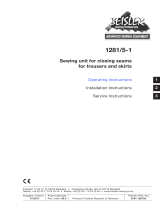 Duerkopp Adler 1281/5-1 Operating instructions
Duerkopp Adler 1281/5-1 Operating instructions
-
Beisler 100 Operating instructions
-
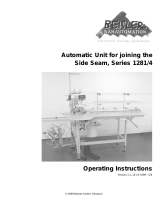 Duerkopp Adler 1281-4 Owner's manual
Duerkopp Adler 1281-4 Owner's manual
-
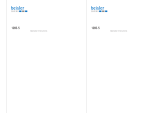 Duerkopp Adler 1265-5 Operating instructions
Duerkopp Adler 1265-5 Operating instructions
-
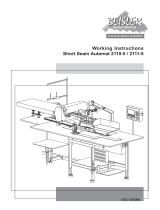 Duerkopp Adler 2111/5 Operating instructions
Duerkopp Adler 2111/5 Operating instructions
Other documents
-
Fly SL500i User manual
-
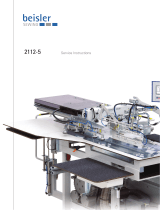 Duerkopp Adler 2112-5 User manual
Duerkopp Adler 2112-5 User manual
-
FläktGroup EUPZ-08 Filter monitor Installation guide
-
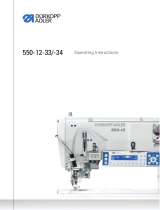 Duerkopp Adler 550-12-33 Operating instructions
Duerkopp Adler 550-12-33 Operating instructions
-
 Duerkopp Adler 877-M_PREMIUM Operating instructions
Duerkopp Adler 877-M_PREMIUM Operating instructions
-
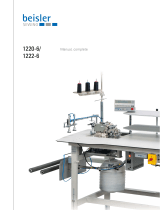 Duerkopp Adler 1222-6 Operating instructions
Duerkopp Adler 1222-6 Operating instructions
-
DURKOPP ADLER 805 Installation guide
-
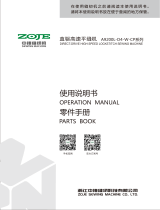 ZOJE A9200L SERIES Parts Manual
ZOJE A9200L SERIES Parts Manual
-
 Duerkopp Adler 967 Operating instructions
Duerkopp Adler 967 Operating instructions
-
 Duerkopp Adler D868 Operating instructions
Duerkopp Adler D868 Operating instructions






























































































